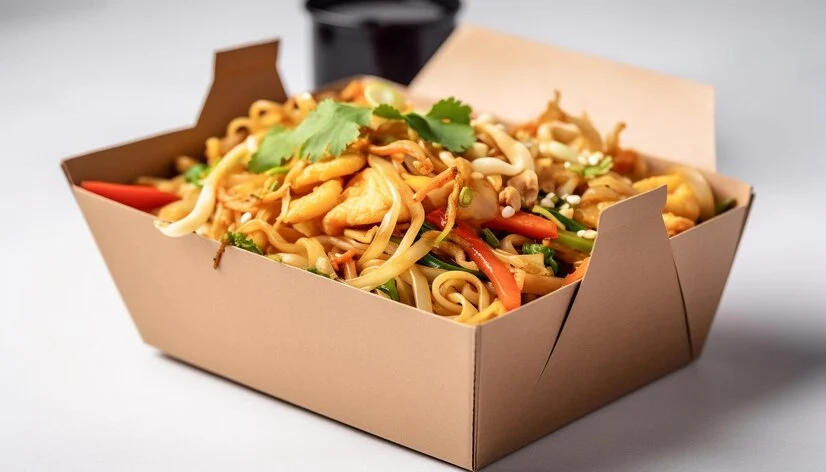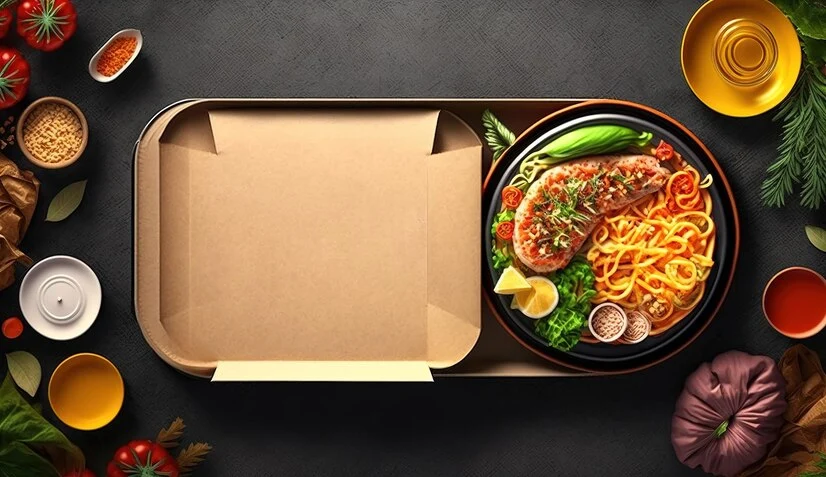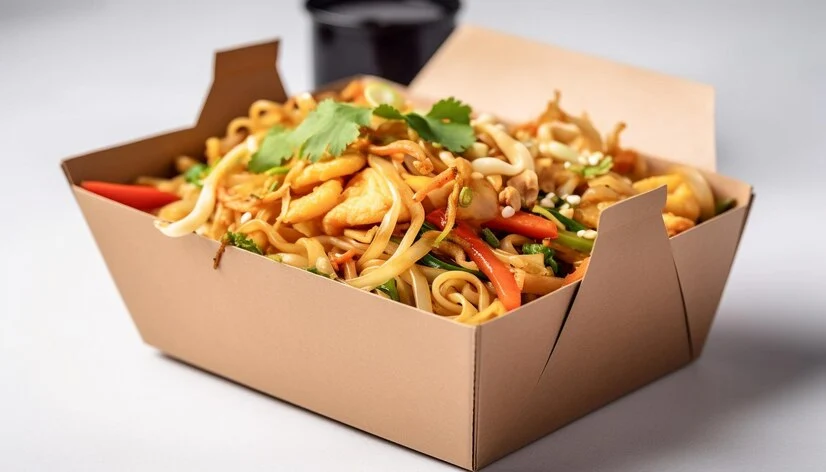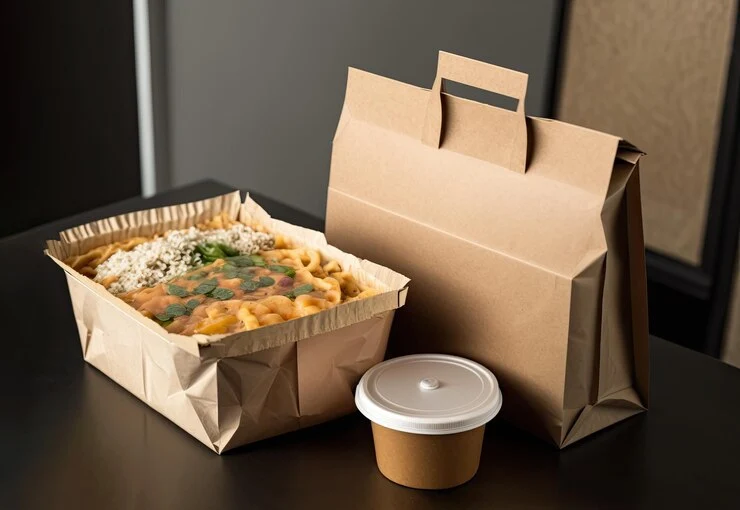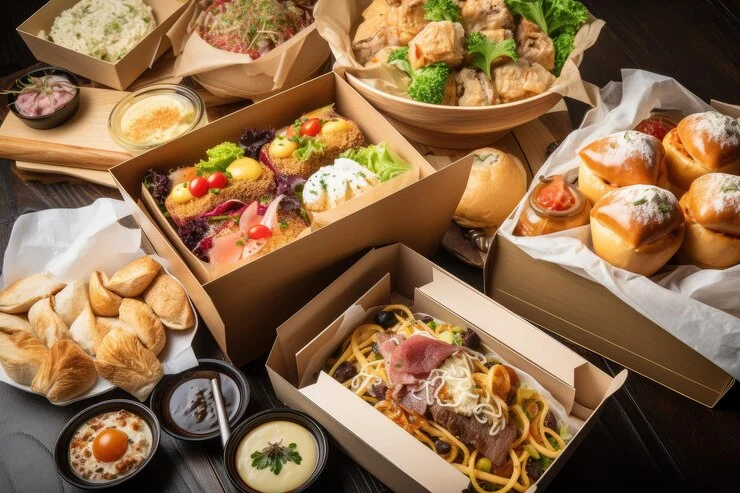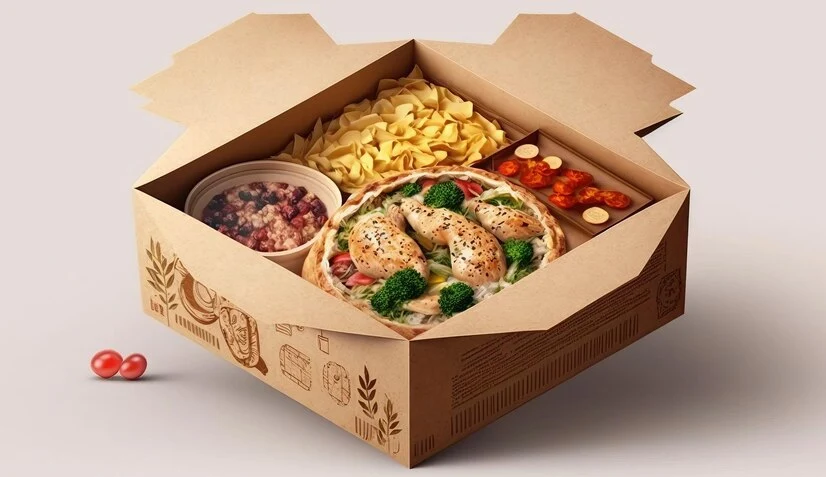“Discover the essentials of box packaging for food! Learn about materials, design, regulations, and more for optimal food safety and brand appeal.”
Key Takeaways:
- Effective box packaging for food is essential for maintaining food safety and improving the attractiveness of the brand.
- To get the best results, selecting the appropriate package material, design, and printing methods is crucial.
- By giving sustainability, usability, and design first priority, companies may get a competitive advantage in the marketplace.
Packaging is essential to maintaining product safety, increasing shelf life, and grabbing customers’ attention in the ever-changing food sector. Regarding the packaging of food items, box packaging for food arises as a key component of achievement. We explore the subtleties of designing highly optimal and aesthetically pleasing box packaging solutions for the US market in this extensive tutorial.
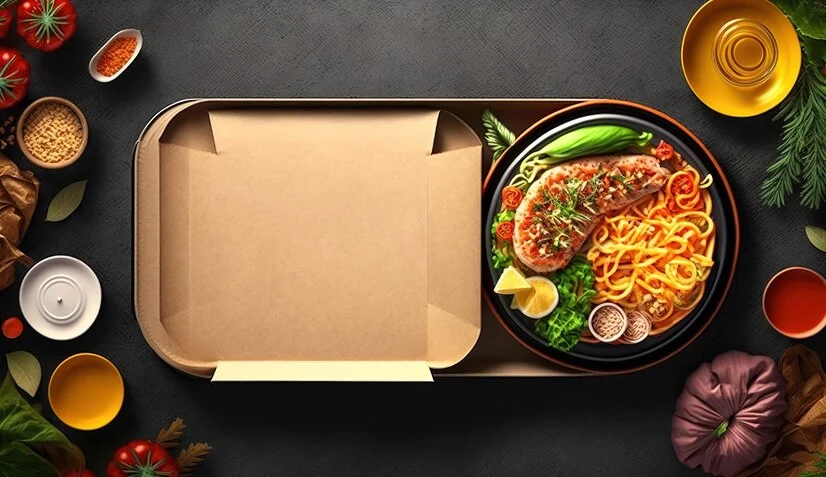
Understanding the Importance of Box Packaging for Food
In the customer-driven market of today, box packaging for food acts as a mode of transportation as well as more. It serves as an effective means of communication, communicating to prospective customers the brand’s identity, product details, and quality control. Based on studies, food packaging boxes greatly affect consumers’ decisions to buy, with more than 70% of respondents concurring that packaging design has an impact on their purchases.
Key Considerations for Effective Box Packaging
When designing box packaging for food, To guarantee both aesthetic appeal and functional integrity, several important criteria are involved. Let’s look at a few crucial factors:
Material Selection:
The choice of packaging material is consummate in maintaining food safety, sustainability, and brand image. conclude that eco-friendly accouterments similar to recycled cardboard or biodegradable plastics align with consumers’ growing environmental knowledge. also, consider the specific conditions of your product — whether it demands humidity resistance, heat sequestration, or hedge parcels.
Design and Branding:
In extension to drawing concentration, a visually pinching project strengthens brand recall and identification. To produce an immersive brand experience, exercise eye- catching images, bold colors, and satisfying typography. To make a strong passional bond with guests, make sure the package project complements your brand’s valuations and messaging.
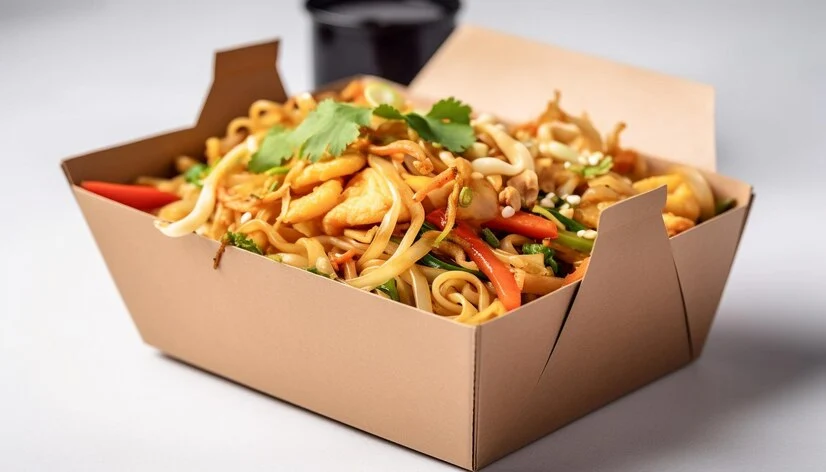
Functionality and Convenience:
In the realm of food packaging boxes or box packaging for food, The most important thing is functionality. set the luxury of the stoner first by involving features like portion control elections, resealable closures, and ready-open mechanisms. Recreating purchases is encouraged by an intuitive packaging project, which also improves the stoner experience and builds brand fidelity.
Regulatory Compliance:
Keep up with FDA regulations and assiduity norms to support you navigate the convoluted world of US food packaging conditions. Make sure that the accouterments exercised for packaging meet all security conditions, similar to rightly relating disinclinations, nutritive data, and expiration dates. Failure to misbehave may affect precious remembrances and deface a brand’s character.
“Packaging is the silent ambassador of a brand.” – Jan Kubasiewicz
Optimizing Box Packaging for Food: A Detailed Analysis
To offer a thorough comprehension of box packaging for food, Let’s study each of the following in more depth, emphasizing different aspects:
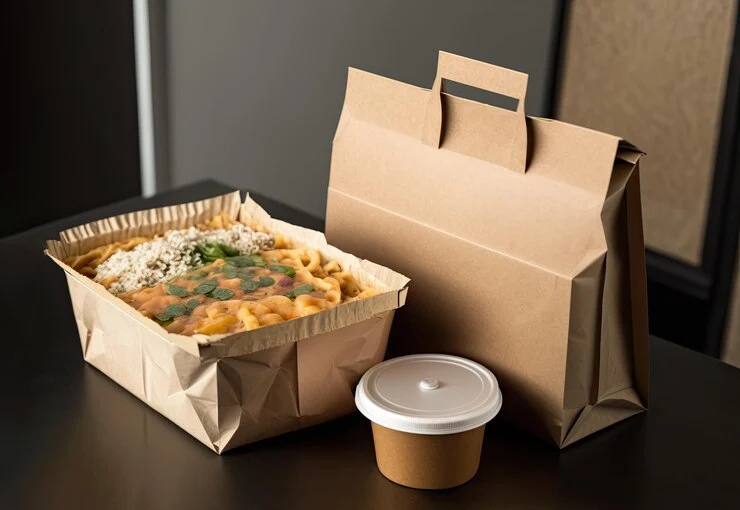
Comparison of Packaging Materials:
| Material | Advantages | Disadvantages |
|---|---|---|
| Cardboard | Sustainable, customizable, cost-effective | Limited barrier properties, susceptibility to moisture |
| Plastic | Excellent barrier properties, lightweight | Environmental concerns, non-biodegradable |
| Biodegradable | Environmentally friendly, compostable | Limited availability, higher cost |
| Glass | Premium look, inert, recyclable | Fragile, heavy, expensive |
Consumer Preferences in Packaging Design:
” Consumers are decreasingly drawn to packaging that reflects translucency, actuality, and sustainability. Brands that prioritize these rudiments not only reverberate with eco-conscious consumers but also foster trust and fidelity.”
Impact of Packaging on Brand Perception:
“A study conducted by Nielsen found that 59% of consumers prefer to purchase products from brands they recognize, highlighting the pivotal role of packaging in shaping brand perception and consumer behavior.”
Emerging Trends in Food Packaging:
- Sustainable Solutions: Packaging innovation is still driven by sustainability, from substitutes made of plants to biodegradable packaging.
- Smart Packaging: Including interactive components, NFC tags, and QR codes improves customer engagement and offers useful product information.
- Minimalist Design: Simplified packaging designs that are visually appealing and have clear messaging appeal to the needs of contemporary customers who value authenticity and simplicity.
Conclusion
In conclusion, box packaging for food acts as a protean instrument to guarantee consumer happiness, brand identity, and food security. Through the integration of slice-bit projects, eco-friendly methodologies, and adherence to regulations, companies may produce packaging results that enhance the client experience while contemporaneously securing the product. It’s important to keep in mind that, in the largely competitive food region, packaging plays a strategic part that can support your brand delivery.
“Good design is good business.” – Thomas J. Watson Jr.
When you apply these insights to your packaging strategy, you’ll see a radical improvement in the market profitability and reputation of your brand.
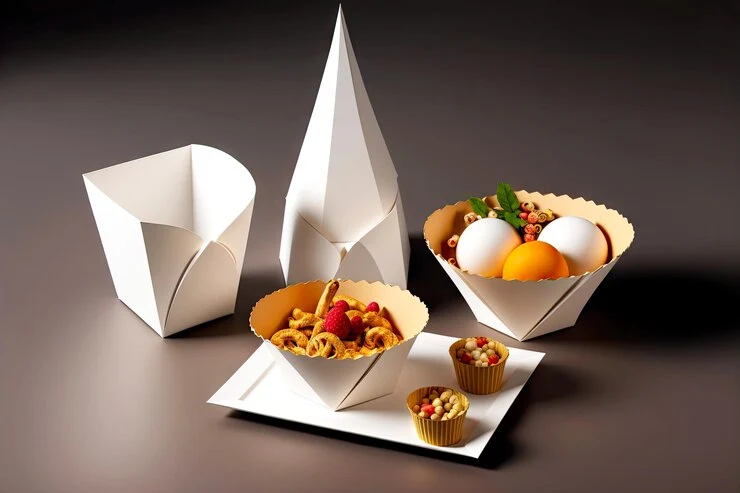
With the certainty of flawless packing, let’s set off on a voyage of gourmet pleasure!
Frequently Asked Questions
1. What are the most important things to think about when choosing box packaging for food?
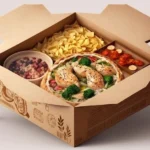
When choosing box packaging for food, To guarantee peak performance and client satisfaction, a number of important considerations must be made:
Food Safety: Give top priority to packaging materials that shield food products from contamination while preserving their freshness and purity. Verify adherence to FDA guidelines for items that come into touch with food.
Packaging Material: Choose packaging materials with qualities like moisture resistance, thermal insulation, and barrier qualities that are in line with the particular requirements of the food product. Glass, cardboard, plastic, and biodegradable materials are common choices; each has pros and cons of its own.
Design and Branding: Select packaging designs that are consistent with your brand identity and that successfully present the product. To draw in customers and improve brand awareness, use eye-catching images, colors, and typography.
Functionality: Think about the useful features of packaging, such as ease of transportation, storage, and opening. To improve the user experience, incorporate features like handy serving suggestions, resealable closures, and portion control choices.
Sustainability: Adopt green packaging options to reduce your influence on the planet and attract customers who care about the environment. To show your dedication to sustainability, look at solutions like recyclable containers, biodegradable packaging, and recycled materials.
2. How can box packaging for food help in preserving food freshness and extending shelf life?
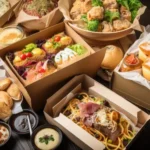
Through a number of methods, box packaging for food is essential for maintaining food freshness and increasing shelf life :
Barrier Protection: Certain packaging materials, including aluminum foil and plastic, offer a strong defense against light, oxygen, moisture, and other elements that might deteriorate the quality of food. This barrier aids in keeping the goods fresh and guards against spoiling.
Modified Atmosphere Packaging (MAP): By altering the environment within the packaging, MAP reduces the rate at which oxidative reactions and spoiling microbes thrive. Through the manipulation of oxygen, carbon dioxide, and nitrogen levels, MAP can prolong the shelf life of perishable food items.
Vacuum Packaging: Before sealing, vacuum packing eliminates air from the package to create a void that stops oxidation and microbiological development. Meats, cheeses, and other perishable products keep their freshness best when preserved using this approach.
Active Packaging: To actively interact with the food surroundings, active packaging solutions include absorbers or additives in the packaging material. Antimicrobials, moisture absorbers, and oxygen scavengers are a few examples of substances that support the preservation of product quality and shelf life.
3. In what ways does box packaging for food goods fall under regulations?
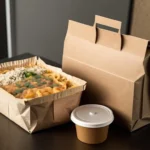
It is imperative to adhere to regulatory criteria while creating and utilizing box packaging for food items. Important regulatory factors consist of:
FDA Regulations: The Food and Drug Administration (FDA) in the US oversees the labeling and safety of box packaging for food. Packaging materials must not introduce dangerous chemicals into the food and must be considered safe for their intended usage.
Labeling Requirements: Food packaging needs to adhere to FDA regulations for accurate and understandable labeling. Information like ingredient lists, nutritional data, allergy alerts, expiration dates, and storage guidelines are all included in this.
Food Contact Materials (FCMs): The FDA’s guidelines for food contact materials must be followed by packaging items that come into direct touch with food. This guarantees that food safety regulations are upheld and that no hazardous materials are transferred from the package to the food.
Sustainability Initiatives: Regulatory bodies are pushing the use of eco-friendly materials and concentrating more on sustainable packaging methods. It is important for companies to be up-to-date on the rules about green packaging, and to guarantee adherence to pertinent standards and certifications.
Businesses may make sure that their operations are compliant with these regulatory requirements by box packaging for food fulfills all applicable safety and labeling regulations, earning the trust of customers and averting possible legal problems.
These FAQs answer frequent questions and offer thorough insights into the nuances of box packaging for food, assisting businesses in making well-informed decisions on their packaging requirements.
